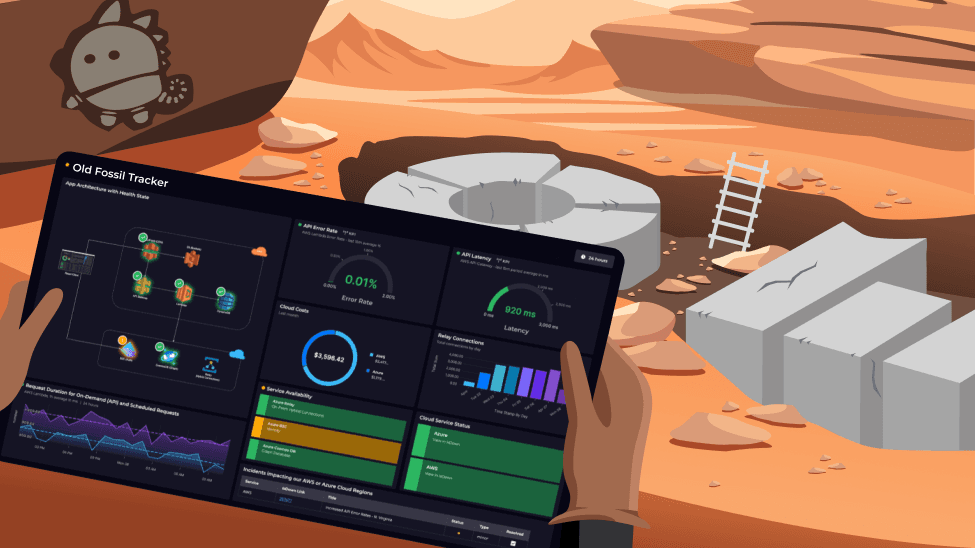
Adam Kinniburgh
VP Innovation, SquaredUp

Looking for an alternative to Grafana dashboards? Here are the three options you should be considering.

VP Innovation, SquaredUp
Grafana is one of the most popular open-source platforms for observability and data visualization. It has long been a popular choice for dashboarding, relied on by the Prometheus community to turn raw metrics into rich, attractive dashboards.
But if you’re reading this, you may be struggling with Grafana for one of several reasons:
You will find many ‘alternatives’ guides that compare Grafana to all-in-one monitoring tools like Datadog, Dynatrace and SigNoz. There are hundreds of monitoring tools to choose from, but what if you don't need another monitoring tool and just want better dashboards?
There are also dozens of BI-style tools to choose from, such as Power BI, Tableau, and Looker. However, these are typically SQL-based reporting tools designed for business data analysts. Engineering teams require real-time operational data direct from a variety of databases and other tools with APIs.
So, when it comes to real-time, operational dashboards, there are only three real alternatives to Grafana dashboards:
Let’s look at each in turn. We’ll consider how they compare to Grafana, and when you might choose each.

SquaredUp connects to over 60 data sources – including Prometheus – to offer flexible, easy-to-use dashboards. Unlike Grafana, which can demand steep learning curves and heavy configuration, SquaredUp delivers a low-code dashboarding experience designed to bridge the gap between technical users and business stakeholders.
It is a cloud-hosted solution with a simple sign-up and a useful free tier.
Key features
SquaredUp is a great option if you’re looking for something easy to use which can pull data in from many different sources, and sharing across different personas and teams is important.

Perses, started in 2021, is an open source project designed to be a direct replacement for Grafana’s Prometheus data visualization. Unlike Grafana, which has changed to the less permissive AGPLv3 license, Perses is licensed under Apache 2.0 and is a CNCF project (currently at the Sandbox maturity level).
Perses is gaining adoption by observability vendors looking to embed dashboards into their tools, such as Chronosphere and Dash0.
Key features
Perses is a great option if you need Prometheus visualization, and open-source, self-hosting, and open standards are important to you.

Kibana is widely used with Elasticsearch or Logstash from the Elastic Stack. Grafana was originally a fork of Kibana, adding time-series visualization capabilities. Kibana has since been forked again as part of Amazon OpenSearch (specifically ‘OpenSearch Dashboards’).
Kibana offers robust support for exploring log and event data, powerful query capabilities, and visualizations tailored to time-series and search-heavy use cases. If your observability stack is already built around Elasticsearch, Kibana fits naturally into your workflow.
However, Kibana is highly tied to Elastic – and that’s both its strength and its limitation. It’s not designed to pull in data from other tools, and creating dashboards can require significant knowledge of Elasticsearch queries and schemas.
Key features
Kibana is best for those already fully invested in the Elastic Stack. Integration with other data sources such as Prometheus requires importing the data into Elasticsearch.
While there are many options for general monitoring and observability tools, there are very few alternatives to Grafana that are standalone dashboards. Kibana and Perses are two specialized dashboards (for Elasticsearch and Prometheus respectively), but many teams are looking for a dashboard that can integrate with multiple data sources. SquaredUp is the most direct alternative: with a easier learning curve, greater breadth of integrations, and more flexible sharing options.